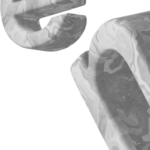

Set up your shop
Manage my administrative procedures

All about VAT for small retailers
27 July 2022
Retailers have to deal with all types of different taxes. Of course, all taxes are of critical importance, but one sales tax is perhaps just a little more important to understand than the others. We’re talking about Value Added Tax, or VAT as it is more commonly known.
If you are operating a retail business in any shape or form, you need to know about VAT for an effective retail business accounting. It doesn’t matter whether you have an online e-commerce store or a physical shop. Processing your VAT correctly can have a huge impact on your profit margins. For this reason, it’s important that the owners of a retail business have a good grasp of their VAT obligations.
To assist business owners, Ankorstore has put together a guide that outlines all you need to know about VAT. This article is designed for any retail entrepreneur who is unsure of what their VAT obligations are. We’ll take you through what VAT is exactly, how it works, and how you can calculate your VAT. We’ve even included a VAT calculator! Then, we’ll look at different VAT regimes, how to declare VAT, look at the history of VAT, and finally we’ll talk about intra-community VAT.
What is VAT?
As we mentioned at the start of this article, VAT stands for Value Added Tax. It is a tax that is collected by the UK government via HMRC whenever value is added to a service or a product. If you hire or sell any goods or services in the UK or throughout the European Union (EU), then they may attract VAT.
How does VAT work?
VAT is what is known as a consumption tax. This means it is paid by the consumer, not by the business itself. In practice, a VAT registered business adds the cost of VAT to the retail price of a product or service. VAT is an indirect tax, because a business must collect VAT on its own behalf. The amount of VAT must be shown as a separate cost on the invoice or receipt the customer receives.
- Example: How VAT works in practice
-
A retailer buys a product at a wholesale price of £10. The VAT that this particular product will attract is £2. The retailer must pass this cost onto the customer and sell the product for £12. The receipt will show that the customer paid £10 for the product itself and then an additional £2 of VAT.
What are the different VAT rates?
In the UK, there is a standard rate of 20% VAT applied to most goods and services. This was increased from 17.5% in January 2011.
Some products and services attract a reduced rate of only 5% VAT. These include products such as car seats for children and home energy supplies like solar panels or insulation.
Other goods and services attract no VAT at all. They are what is known as zero rate goods and products. A retailer must still show that they have charged VAT, but the rate will be zero per cent. Zero rates apply to the majority of food products, children’s clothing, books, and some health-related items such as sanitary pads or vision aids.
Some goods and services are completely exempt from VAT. This means that a retailer does not need to charge VAT or show that they have charged a zero rate. VAT exemptions apply to lottery tickets, betting and gaming, antiques and works of art, and financial services.
It can be difficult to know exactly what rate of VAT particular goods or services attract. To be sure, it is best to check with HMRC directly or speak with a business accountant.
How to calculate VAT for your retail store?
There is a simple calculation that you can do to figure out what rate of VAT you should be charging. This depends, of course, that you know what the correct VAT rate is.
Let’s assume that a retailer is charging the standard rate of 20% on an item. The wholesale cost of the item is £80. To calculate the VAT rate, all you need to do is multiply the price by 1.2. For a product that has a reduced rate of 5% VAT, multiply the original cost by 1.05.
Ps: Be carefull on how you are paying the VAT with the Payment terms
- Example: Calculating a standard VAT rate
-
A desk costs a retailer £80. To ascertain the VAT rate, the retailer multiplies £80 by 1.2. This arrives at a figure of 96. Therefore, the price of the desk with VAT should be £96. The desk has attracted £16 of VAT.
How to declare VAT?
A retail business must declare the amount of VAT they have charged and how much they have paid to other businesses to the UK government. This is known as a VAT return. To submit a VAT return, a business must first apply for a VAT registration number via HMRC. Once the application has been reviewed and the VAT number issued, a company or small business owner can then charge and declare VAT. It is possible to reclaim any VAT paid to another business.
Usually, a retailer will declare VAT via a VAT Return form to HMRC once every three months. HMRC do also offer a VAT Annual Accounting Scheme where a business can declare VAT just once a year. To be eligible for this scheme, your business must have an estimated VAT taxable turnover of £1.35 million or less.
Submitting a VAT Return can be done online via the HMRC website or by using dedicated tax software. Some business owners prefer to let their company accountant file their VAT returns for them. Having an accountant take care of your VAT issues can ensure that you don’t make any mistakes on your returns.
Are you eligible for a VAT exemption?
Not every business has to pay VAT. Some businesses may be exempt from charging VAT because of how much they earn. Others are exempt from VAT because of what products or services they sell and where they sell them.
You will need to register for VAT if your new business sells goods and services in the UK that are not VAT exempt, and the annual total taxable profit is above £85,000. Your business will not be eligible for VAT if the turnover is less than £83,000. Businesses that are based elsewhere but sell goods or services in the UK have a VAT applicable threshold of £70,000.
Goods and services that are completely VAT exempt include:
- Food and drink
- Animals
- Animal feed
- Plants and seeds
- Sports and leisure activities
- Cultural events
- Art
- Antiques
- Health services and products
- Education services and products
- Welfare services and products
- Services and products from charities
- Services and products relating to utilities, energy and energy saving
- Building and construction services and products
- Land and property
- Transport and freight services
- Printing services
- Postage
- Publications
- Clothing and footwear
- Protective and safety equipment
- Financial services
- Services and products relating to investments and insurance
Why VAT was introduced to the UK?
The UK introduced the new VAT on the 1st of April 1973. This was done to replace the outdated Purchase Tax which had been in effect since October 1940. Purchase Tax came into being to reduce wastage of raw materials during World War Two. It was initially set at 33.33%. The abolishment of Purchase Tax occurred as a result of the UK joining the European Economic Community.
What is Intra-Community VAT?
The EU has a VAT system in place that applies to all goods or services bought and sold for use or consumption in the EU. The term Intra-Community VAT refers to the EU rules surrounding VAT.
Although each member state has their own VAT rules, these must conform to the EU VAT Directive. To streamline this process, the EU introduced the concept of Intra-Community VAT. EU law stipulates that VAT must be at least 15%, with a reduced rate of at least 5%.
The accepted rule is that any goods or services sold to private individuals within the EU must adhere to the VAT rates that apply to the customers. So, if an online shop in Sweden sold a product to a private individual in Spain, then Spanish VAT rates would apply.
Since Brexit, the UK is no longer under the jurisdiction of the EU VAT Directive. It is important to note, however, that Northern Ireland is a territory of the EU for VAT purposes.
Tax issues are often complicated. Many small business owners feel like they don’t get the support or help they need. That’s why Ankorstore launched the Ankorstart program. Ankorstart is designed to provide guidance and services to small businesses and assist them in getting the best start they can. Take a look for yourself!
FAQs
Does my online shop have to register for VAT?
Yes, if your annual turnover is above £85,000 and you do not sell goods or services that are VAT exempt.
How often do I have to file a VAT Return to HMRC?
Usually, most business owners file a VAT Return every three months. This can be done via software or through an accountant.
What are the benefits of begin registered for VAT?
You can claim back VAT costs your business has paid other businesses for services. Registering for VAT can also make your business appear more professional and larger than it is.
Related posts "Manage my administrative procedures"

Do you want to know how self-employment tax works? Do you have questions about your tax limit, types of taxes, self-assessment forms, and tax return filing? The following article is a quick guide to help you deeply understand self-employment tax rates and address other tax concerns

Ankorstart experts share some tips on how to produce a purchase order to streamline business practices, manage finances, and ensure to have enough stock.

Ankorstart experts explain safety guidelines for a retail store, identifying potential risks and providing insight on how to avoid injuries through the implementation of security policies.

Learn thanks to the Ankorstart experts how to protect your brand and what a trademark is


